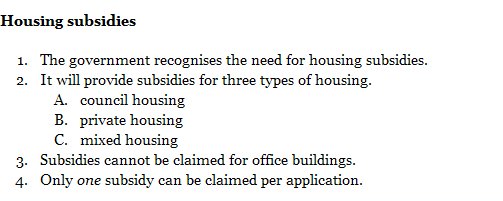sample from HTML program and PDF book
1. Full stops in essays (a full stop is sometimes called a ‘period’) are used at the end of complete sentences – like this one.
2. The only common exception to this rule occurs when the sentence is a question or an exclamation (both of which should be avoided in academic essays).
Is this question really necessary?
What a mess!
Notice that both these marks of punctuation have their own built-in full stop.
3. The stop is also used following abbreviations:
ibid. No. 1 ff. e.g.
4. The stop is not necessary following common titles which are shortened forms of a word (technically, contractions):
Dr Mr St Mme
5. Full stops are not necessary after the initial capital letters commonly used as abbreviations for the titles of organisations and countries:
NATO BBC UNESCO USA
6. They are not used where the initial letters of a standard work of reference is used as an abbreviated title:
OED [Oxford English Dictionary]
DNB [Dictionary of National Biography]
PMLA [Papers of the Modern Languages Association]
7. No full stop is required if a sentence ends with a title or an abbreviation which contains its own punctuation:
He is the editor of Which?
She gave her address as ‘The Manor, Wilts.’
8. Full stops should not be used after titles, headings, or sub-headings.
Introduction
The Turn of the Screw
Industrial Policy Report
9. The stop is normally placed inside quotation marks but outside a parenthesis:
“What joy we had that particular day.”
Profits declined (despite increased sales).
10. However, if the quotation is part of another statement, or the parenthesis is a complete sentence, the full stop goes inside:
Mrs Higginbottam whispered “They’re coming”.
There was an earthquake in Osaka. (Another had occurred in Tokyo the year previously.)
© Roy Johnson 2003
Buy Writing Essays — eBook in PDF format
Buy Writing Essays 3.0 — eBook in HTML format
More on writing essays
More on How-To
More on writing skills

